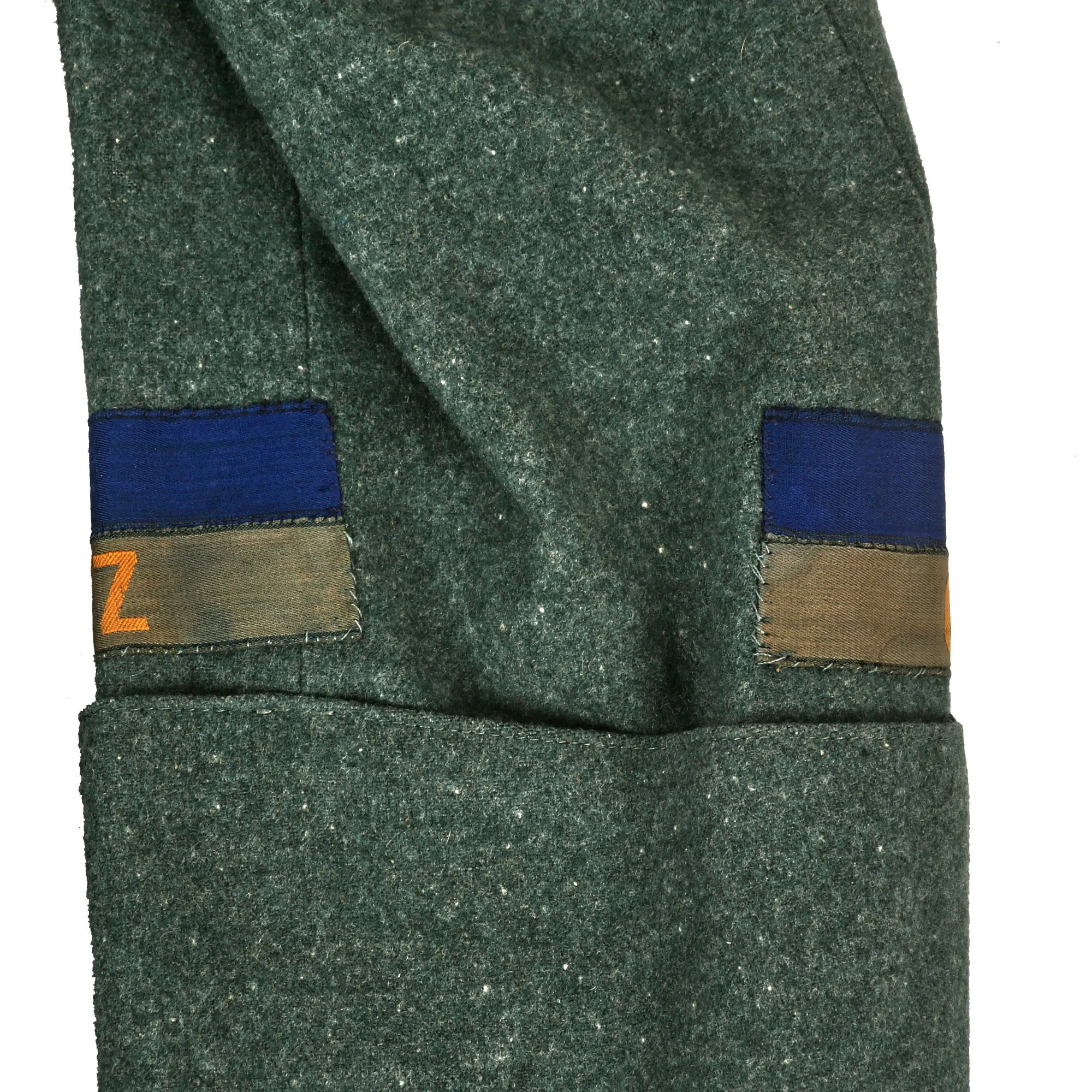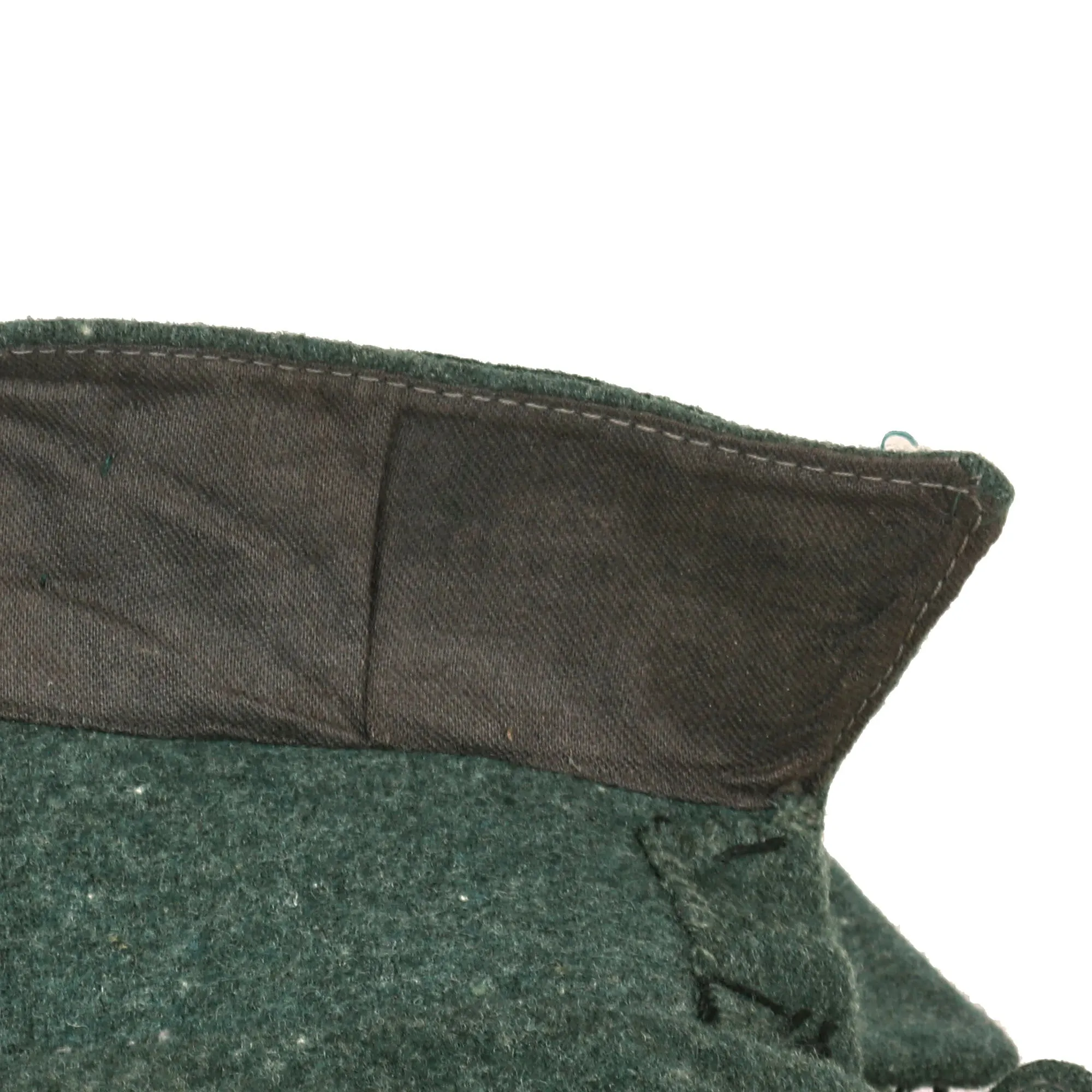Original Item: Only One Available. Der Stahlhelmbund (The Steel-helmet-league) was conceived as a national veterans’ organization by Franz Seldte in November of 1918, and was officially founded on Christmas day of that year. It was mostly comprised of WWI veterans trying to assimilate back into what was then a devastated society. The Stahlhelm became the largest of the post-war veterans’ groups, incorporating many of the smaller Freikorps groups into it. Most of its members were assimilated by the SA in 1933, and it was disbanded in 1935, with its remaining members absorbed by the DRKB ("Deutscher Reichskriegerbund"), which, in turn, was absorbed by the NS-RKB ("Nationalsozialistische - Reichskriegerbund") in 1938. The Stahlhelm organization was divided into twenty-five district areas, with each one having a distinctive sleeve shield to identify the area the members were from.
This is a very nice example of a uniform used by members of Der Stahlhelmbund, which was essentially the same as the German military uniform. Many members in fact used their uniforms, with the original insignia removed and a district patch added to one of the arms. The tunic features an 8 button front closure and a vented rear seat, with French cuffs on the sleeves. It has 4 pockets, the top 2 with scalloped flaps, and looks very much to be a German Weimar Period Reichswehr tunic. The WWI tunics usually did not have chest pockets, which were introduced for the Reichswehr in the 1920s. The buttons themselves all are embossed with a German steel helmet that has Der Stahlhelm stamped across it.
The tunic has a single thin shoulder board on the right shoulder, with a pattern of black & orangeish felt. From an organizational chart we believe this to indicate the soldier was in the Gruppe Gilbweft.
The organization was divided into twenty-five district areas, with each one having a distinctive sleeve shield to identify the area the members were from. The right sleeve of the uniform bears a sleeve shield patch for the L.V. Schlesien district. This district refers to what is now Lower Silesia, a historical and geographical region mostly located in Poland with small portions in the Czech Republic and Germany.
There are two cuff titles on the right sleeve, the first reading L.V. SCHLESIEN, and the second reading GRENZGAU OBERLAUSITZ. Der Stahlhelm was originally formed in Madgeberg. As membership spread to other cities and states, a method of local identification was needed. Cuff titles began to appear around 1926 and were worn on the right lower sleeve. By 1929, patches identifying districts appeared on the right upper sleeve, but cuff titles could still be worn.
The collar of the uniform has a pair of Wehrsport collar devices on a dark green tab. The devices are silvered bronze insignia consisting of dual oak leaves and acorns with blackened inscriptions of “WEHRSPORT”. These were authorized to be worn as of 1930.
Overall condition of the uniform is very good, showing only light use. There are a few light stains, but nothing out of the ordinary. There also is some scattered moth damage, something that is very hard to avoid with wool uniforms.
This is an absolutely fantastic Weimar period uniform set for one of the most famous veteran’s organizations in history, ready for further research and display!
The Weimar Republic (German: Weimarer Republik), officially the German Reich (Deutsches Reich), also referred to as the German People's State (Deutscher Volksstaat) or simply the German Republic (Deutsche Republik), was the German state from 1918 to 1933. As a term, it is an unofficial historical designation that derives its name from the city of Weimar, where its constitutional assembly first took place. The official name of the republic remained the German Reich as it had been during the German Empire because of the German tradition of substates.
Although commonly translated as "German Empire," Reich here better translates as "realm" in that the term does not necessarily have monarchical connotations in itself. The Reich was changed from a constitutional monarchy into a republic. In English, the country was usually known simply as Germany, and the Weimar Republic name became mainstream only in the 1930s.
































